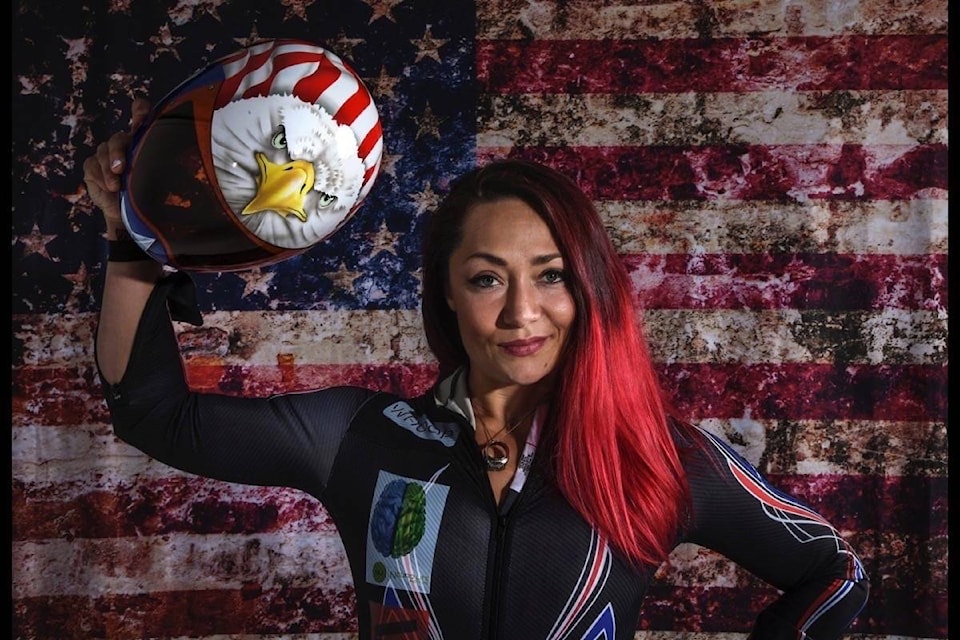DAEGWALLYEONG, South Korea - What happened in men’s skeleton, actually, is that Iron Man won gold. Somewhere under the Iron Man helmet, there was an elite athlete, a first-place finisher in a monochrome red bodysuit - a South Korean named Yun Sung-bin. But what Yun had, mostly, was that helmet. A black-tinted face mask. Painted glowing eyes. Metallic planes of gold and red armor.
The world’s best Halloween mask.
And now, the fitting face of this wonderfully helmeted sport.
Over the last few years, the fiberglass helmets used by skeleton riders have turned into Winter Olympics art pieces. In the last few days alone, riders in PyeongChang have trusted their safety to all matter of customized helmets - ones painted with skulls and crests and Game of Thrones-like metal motifs. There could be an entire category for the animal kingdom. American Katie Uhlaender has a bald eagle helmet. One men’s Canadian rider has a photorealistic polar bear, growling. Another men’s Canadian rider has a photorealistic grizzly bear, growling. A Ghanaian rider, Akwasi Frimpong, wears a helmet that depicts not just one animal, but an entire chase scene - a rabbit escaping a lion, in what Frimpong describes as a metaphor for his life, one in which he has long tried to out-run his stress.
“I proved to myself today,” Frimpong said after his race on Friday, “that I have finally been able to escape out of the lion’s mouth.”
Skeleton is, perhaps, the perfect sport for beautiful helmets. Artists paint hockey goalie helmets, too, but those helmets are flawed canvases, pockmarked by holes, partly covered by screws and straps. Skeleton helmets, on the other hand, are as bald as bowling balls, made of fiberglass that artists can prime, airbrush-paint, sand, sand again, and polish until they look like glass. “They are basically imperfection-free,” said Jordon Bourgeault, a Calgary-based artist who painted Yun’s Iron Man, as well as several others for Olympian skeleton riders.
Skeleton, which was reborn as an Olympic sport in 2002, has only recently caught the helmet craze. A decade ago, most skeleton helmets were plain; in fact, they were not even designed for skeleton. Athletes instead borrowed equipment manufactured for skiers and skydivers. But then, 2010 skeleton gold medalist Jon Montgomery said, the orb-like skeleton helmet was born - created from by a German craftsman in his basement. Now, that same German provides his helmets to Uvex, a safety equipment company, which sells them all over the world, to be used by anybody interested in sliding on a tiny sled down ice at 80 miles per hour, on their stomachs, headfirst.
Even for a sport named skeleton, some of the helmet designs skew macabre. Flames are a steady theme. Same with jaws and teeth. One Canadian rider, Jane Channell, wears a helmet that depicts an alarmingly detailed rib cage - and in the space where one might find the heart, there is instead an iridescent maple leaf. “It turned out to be a bit dark,” Channell said, “but I love it.” Romania’s Maria Marinela Mazilu has, in the part of her helmet that covers her mouth, triple-sized red lips, two fangs for incisors. “Like Dracula,” she said with a shrug. “It’s Romania.” She held up her helmet and turned it around.
“And in the back, there is a bat. That’s also Romania.”
And then there’s Elisabeth Vathje, who has a style that could only be called Maximalist Canadian. At the crown of the helmet, there is a pattern of red-and-black flannel. The flannel runs up the helmet for several inches and is then torn to shreds by moose antlers. Somehow, in this collision of antlers and flannel, a maple leaf emerges.
Bourgeault, who painted Vathje’s helmet, said the project took him about 80 hours - two weeks or work, uninterrupted, using airbrushes and stencils and a layer of sheen used for automobiles. He charges somewhere between $1,000 and $1,500. The price he charges is a little less than he should, he said, but then he thinks about the athletes, who don’t make much money, and he thinks about how the helmet will be used. That’s his art, going down the course, in a blur, just inches off the ice.
“I think to myself, this is going to be in the limelight,” Bourgeault said.
- - -
The Washington Post’s Chelsea Janes contributed to this report.
